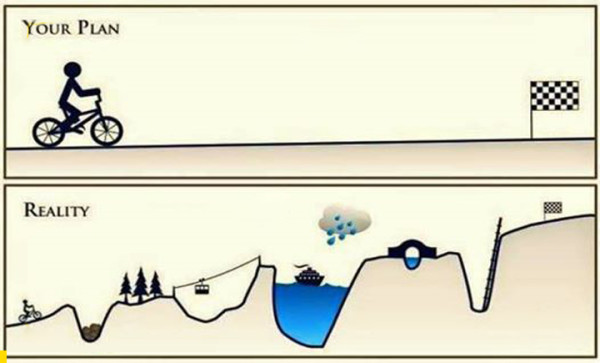
Anytime you’ve just applied for a job you really want that’s a solid fit for you, you’ll want to “backdoor” your way in too. Aside from calling, that involves using LinkedIn to find someone at the company who is probably the hiring manager for this position and emailing a brief note with your resume’ and cover letter attached. Sometimes this a great bypass of the HR screening process. And sometimes it’s a good double-hit, showing initiative, interest, and thoroughness if, for instance, it’s a small company with no in-house HR department.
As you peruse LinkedIn, if you see you have a close colleague who works at the company, you could backdoor through that person. If you don’t know anyone, look to see if the person you choose has worked anywhere you have before. That makes a great introduction in the beginning of your email. If you can’t find anyone who might be at a hiring manager level, send it to someone in the same department as the job opening.
People want to help. But make it easy for them to do so…think about when you have a job and someone who’s in transition asks for your help. Be polite but specific with your request. For example, I asked a former coworker, Matt, to 1) put in a good word for me at his current company (with the hiring manager if he knew who that was) and 2) forward my resume’ and cover letter after I applied online. This is the standard backdoor message I work from:
Dear ____,
After having seen the posting for the ____ position you are seeking to fill, I just applied via ____ ((method)). In addition, I wanted to make sure my resume’ and cover letter are seen by someone in the ____ department. If you are not the hiring manager for this position, I would appreciate it if you would forward this email to him or her. Thank you very much for your time and help.
Sincerely,
((your name here))
Then, make the email subject line “Could you help?” Most people like to help–especially when it doesn’t take too much time or is not that difficult.
When you completely can’t find anyone to email, there’s no general email address listed at the web site, and you don’t want to call, here’s another idea. If the company has a Contact Us page with fields to fill in to email them, do this: With most browsers, right-click, and choose “View Page Source” to reveal the html code. Then, press Ctrl-F to search for “@”. This may show you the general email address. https://www.thegeneral.com/about/contact is a good example where this technique works is (no pun intended) . Then you can email your backdoor message with attachments.
Sometimes, like with Craigslist, you won’t know the company at all. In this case, don’t fret about not being able to backdoor. Just use your spreadsheet to keep up with the TO email address you used when you applied, and email your follow up.
What tips can you add about backdooring? What successes have you had with this approach?
If you have family, friends, or colleagues that are on the job hunt, please share this blog with them. Don’t miss the next topic in this series! Sign up for this blog at the lower right corner of this page to be alerted via email!


